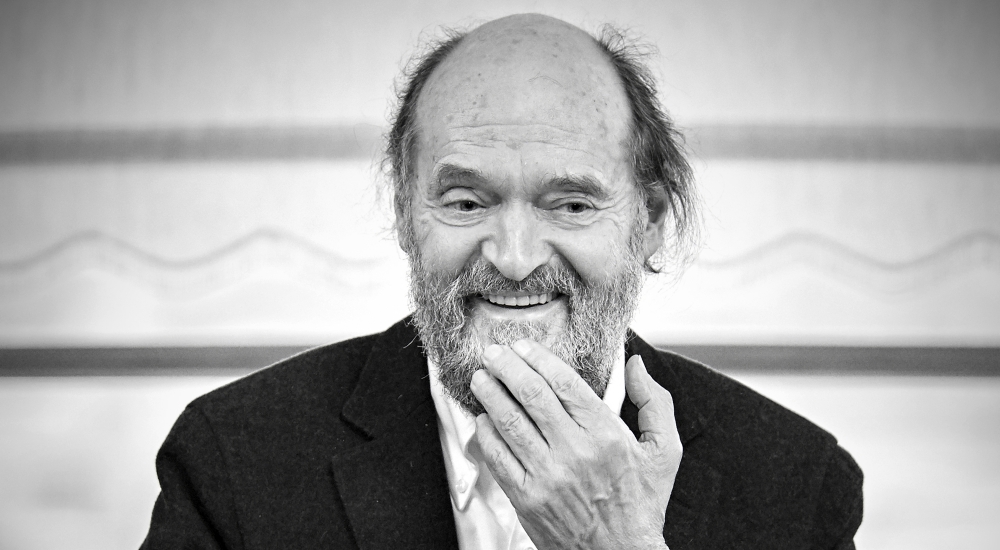Warning: Undefined array key "HTTP_REFERER" in /data01/virt22169/domeenid/www.helilooja.ee/emp2020/2023/wp-content/themes/emp2023/template-parts/content-bio.php on line 11
Warning: Undefined array key "HTTP_REFERER" in /data01/virt22169/domeenid/www.helilooja.ee/emp2020/2023/wp-content/themes/emp2023/template-parts/content-bio.php on line 11

Arvo Pärt (born 1935) is the most beloved and played living composers in the world today. He entered the world of music in the second half of the 1950s, as a member of a group of composers including Eino Tamberg, Kuldar Sink, Jaan Rääts, Veljo Tormis and others, who were the ones to revive Estonian music from the stagnation that Soviet rule had imposed on it. The young Pärt’s works were very bright and memorable. He was also the most eager to implement new composition techniques. His works that used the so-called collage technique, where he partially used music from previous times, were most impressive. The young composer was extremely popular – his works were both recognised in national competitions across the federation, and were also popular with audiences. His pieces often had to be repeated during concerts due to popular demand. The fact that Pärt’s works also made it to the international stage is noteworthy, as this was a rare thing at that time. At the end of the 1960s, the situation began to change. The composer tired of modern means of expression. He has said that he could have continued like this forever, but had begun to run out of will. He wanted to use his own energy and resources to express the same kind of beauty, power and balance that was hidden in the works he had been citing, especially in the early music. A decade full of quests began. Pärt believed that what he was looking for could be found in early music, so he began to research mediaeval music. Early music was almost completely unknown in Estonia during the Soviet era, and sheet music from the period was impossible to come by. Pärt found music with the help of his friends in Moscow, having to rewrite many of them by hand. He then wrote his “Third Symphony” (1971) and the 11 symphonic cantata “Song to the Beloved” (1973/1974), but was still not completely satisfied (he has removed the last one from his repertoire now). His quest continued until the autumn of 1976, when he finished seven works for different orchestrations under a single name “Tintinnabuli“ (Latin for tinklers). Silence plays an important role in Pärt’s tintinnabuli music: „Before anyone says anything, perhaps they should not say anything at all. My music has come forth after I have been silent for a while, literally silent.“ Pärt has said that silence is always more perfect than any kind of music. Silence is always “filled”. There is a lot of ethereal facture in the Tintinnabuli pieces, a lot of pianissimi and pauses. Each sound has been attended to with utmost attention. This music is especially inwards, often slow in motion, playing on the verge of sound and silence, almost meditative. The seemingly simple factures come alive and tintinnabulate in the acoustics of churches, where echoes “fill” the pauses. There is a certain closeness between the tinklers’ music and his early music, but their harmonies are very up-to-date. Even though Pärt’s earlier and later works seem to be in opposition, especially sound-wise, there is something familiar throughout his creation – the sound work is always profoundly thought through, to every detail, and the pieces are strictly systematic, despite the dissimilarity of the works. Vocal works with ecclesiastic messages dominate throughout the Tintinnabuli sound, but there are also a lot of instrumental pieces.
Composed for soprano and eight violoncellos, L’abbé Agathon is inspired by Maladrerie Saint-Lazare, one the oldest leper hospitals in Europe. The remains of the hospital, dating from the 12th century, lie close to Beauvais. Pärt came across a 4th century legend concerning Agathon in a book of stories about the Desert Fathers that describes the life of Christian monks in the deserts of Egypt. The legend tells us of the meeting between the hermit Agathon and a leper who tested Agathon several times. Only after these trials, the leper revealed himself as an angel sent by God.
